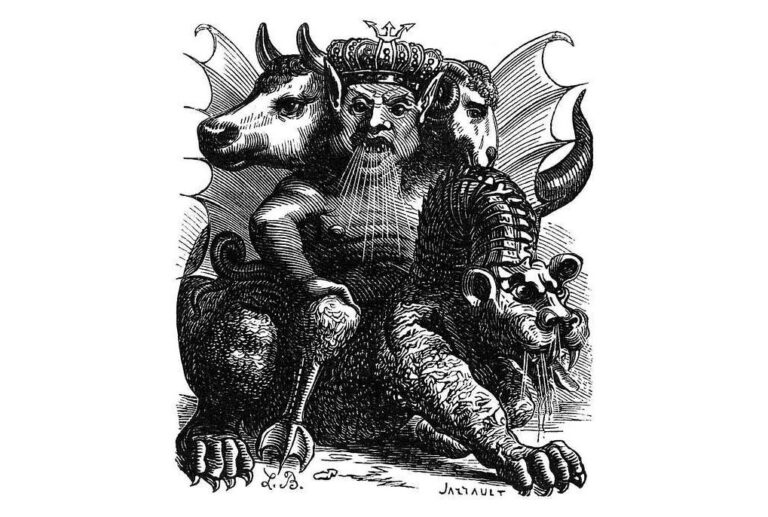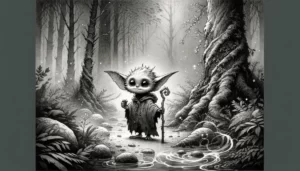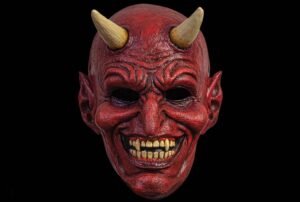Table of Contents
Who is Asmodeus?
Asmodeus is a figure that appears in various religious and mythological traditions, often associated with demonology. The name “Asmodeus” is most commonly linked to Judeo-Christian traditions, particularly within certain interpretations of the Bible and later Jewish and Christian demonology.
In the Hebrew Bible (specifically, in the Book of Tobit), Asmodeus is described as a demon who was in love with Sarah, the daughter of Raguel (read main article about Asmodeus in bible). He is said to have killed seven of her husbands on their wedding nights before being thwarted by the archangel Raphael.
In later demonology, Asmodeus is often depicted as a powerful and malevolent demon, associated with lust, wrath, and revenge. Different traditions may have varying attributes and stories about Asmodeus.
It’s important to note that the concept of Asmodeus is not consistent across all religious or mythological traditions, and interpretations can vary widely. Additionally, Asmodeus is sometimes depicted in popular culture, literature, and fantasy as a character in various forms, such as in works of fiction, role-playing games, and other media.
Physical Description
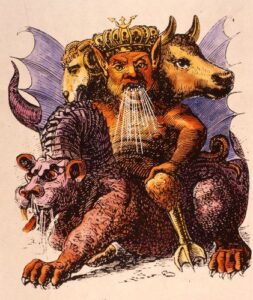
Descriptions of Asmodeus’ physical appearance can vary depending on the source, as depictions often draw from artistic and literary interpretations rather than specific religious or mythological texts. In some traditions and artistic representations, Asmodeus is portrayed as a monstrous and demonic figure, while in others, he may be depicted as a more humanoid or seductive being.
Common features associated with the visual representation of demons, such as horns, wings, claws, and a sinister demeanor, are often attributed to Asmodeus. Additionally, Asmodeus is sometimes depicted with a whip, representing his role as a demon associated with lust and temptation.
In fantasy literature and popular culture, where Asmodeus is often used as a character in fictional settings, artists and writers may take creative liberties in imagining his appearance. As a result, there isn’t a single definitive physical description of Asmodeus, and his portrayal can vary widely across different works and interpretations.
Personality
The personality traits ascribed to Asmodeus often align with his role as a demon associated with lust, temptation, and revenge. Here are some common personality characteristics attributed to Asmodeus in various traditions:
Seductive and Tempting: Asmodeus is often portrayed as a seductive and tempting figure, luring individuals into sinful and indulgent behavior. His association with lust and desire emphasizes this aspect of his personality.
Vengeful: In some stories, Asmodeus is depicted as vengeful, particularly in response to perceived slights or interference in his pursuits. This vengefulness is often directed towards those who resist or attempt to thwart him.
Manipulative: As a master of temptation, Asmodeus is often described as highly manipulative. He may use cunning and deception to achieve his goals, exploiting the weaknesses and desires of individuals.
Cruel and Malevolent: As a demonic figure, Asmodeus is commonly associated with cruelty and malevolence. Stories depict him reveling in the suffering of others and delighting in the chaos he causes.
Deceptive Charm: In some interpretations, Asmodeus possesses a deceptive charm that allows him to appear attractive and alluring, concealing his true demonic nature until it’s too late for his victims.
Prideful: Like many demonic entities, Asmodeus is often portrayed as prideful, reveling in his own power and enjoying the worship and fear of those who succumb to his influence.
Personality traits may vary depending on the cultural or religious context. And the specific interpretation of Asmodeus in different stories and traditions. Additionally, in more modern or fictional depictions, writers and creators may take creative liberties to adapt and expand upon these traditional characteristics.
Origin
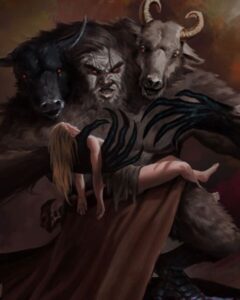
The origin of Asmodeus is rooted in religious and mythological traditions, particularly in Judeo-Christian beliefs. The name “Asmodeus” has its origins in Hebrew scriptures, specifically in the Book of Tobit, which is considered part of the biblical apocrypha. The Book of Tobit tells the story of Tobit, a righteous man, and his son Tobias. Asmodeus appears as a demon who had killed seven of Sarah’s husbands on their wedding nights.
The name “Asmodeus” itself is thought to be derived from the Avestan language, an ancient Iranian language related to Old Persian. In Avestan, “aēšma-daēva” is a term referring to a demon of anger or wrath. And it is believed that this term influenced the Hebrew name “Ashmedai,” which later became “Asmodeus.”
Asmodeus is further mentioned in various demonological texts and later interpretations of biblical stories. Over time, he became a prominent figure in medieval demonology and folklore, associated with temptations of the flesh and various vices.
While Asmodeus has its roots in religious texts, the character has also been adapted and incorporated into various works of fiction, fantasy literature, and popular culture. Where additional elements and interpretations have been added to his lore.
Modern Appearances
Asmodeus continues to make appearances in modern literature, popular culture, and various forms of entertainment. Here are some examples of how Asmodeus is portrayed in more contemporary contexts:
Literature: Asmodeus is a popular figure in fantasy literature, often appearing in works that draw inspiration from mythology and demonology. Authors may use Asmodeus as a character in stories that explore themes of temptation, redemption, and the battle between good and evil.
Role-Playing Games (RPGs): Asmodeus is a frequently featured character in role-playing games, particularly in settings that incorporate elements of demonology and fantasy. Games such as Dungeons & Dragons often include Asmodeus as a powerful demon lord or archfiend, serving as a major antagonist.
Video Games: Asmodeus appears in various video games, sometimes as a major boss or antagonist. These representations can vary widely, from traditional demonic depictions to more creative and stylized interpretations.
Television and Film: Asmodeus may make appearances in TV shows and movies that explore supernatural or occult themes. Depending on the context, these portrayals can range from traditional demonic figures to more nuanced and complex characters.
Video Game Lore: In certain video game universes. Asmodeus might be part of the lore and backstory, influencing. The game’s narrative and providing a source of conflict or mystery for players to explore.
Modern interpretations of Asmodeus can vary widely, and creators may take creative liberties in adapting the character to fit their specific narratives and themes. As a result, you may encounter different versions of Asmodeus across different media and genres.
Asmodeus FAQ
Who is Asmodeus?
Asmodeus is a figure associated with demonology and is often considered a demon in various religious and mythological traditions. The name has its origins in Hebrew scriptures, particularly in the Book of Tobit in the biblical apocrypha.
What does Asmodeus mean?
The etymology of the name "Asmodeus" is thought to have roots in the Avestan language, an ancient Iranian language. The term "aēšma-daēva" in Avestan refers to a demon of anger or wrath, and it is believed that this influenced the Hebrew name "Ashmedai," which later became "Asmodeus."
Who is Asmodeus in the Bible?
Asmodeus is mentioned in the Book of Tobit, an apocryphal book of the Bible. In the story, he is a demon who had killed seven of Sarah's husbands on their wedding nights. The archangel Raphael helps Tobias, Sarah's future husband, overcome Asmodeus, and they eventually marry.
What does Asmodeus look like?
Descriptions of Asmodeus' appearance vary. In some traditions, he is depicted as a monstrous creature with three heads (one like a sheep, one like a bull, and one like a man), and a body with features of different animals. In other interpretations, especially in modern fantasy, he might be portrayed as a more humanoid figure, sometimes with demonic attributes.
How to pronounce Asmodeus?
Asmodeus is typically pronounced as "az-mo-dee-us" (/ˌæzˈmoʊ.di.əs/).
What is Asmodeus the god of?
Asmodeus is not typically considered a god. Instead, he is more commonly associated with being a demon, often referred to as the "prince of demons" or the "king of demons" in certain demonological traditions.
What is Asmodeus the demon of?
Asmodeus is associated with various vices, with lust being a prominent aspect of his demonic portfolio. He is often considered a tempter, leading individuals astray with desires of the flesh.
What does Asmodeus do?
Asmodeus is often depicted as a tempter and deceiver, leading individuals to indulge in sinful behavior. His actions may include fostering lust, revenge, and other vices. In the context of the Book of Tobit, he is specifically associated with causing harm to marriages.
What sin is Asmodeus?
Asmodeus is commonly associated with the sin of lust. In various traditions, he is seen as a tempter who exploits human desires, particularly those related to sexual lust and indulgence.
